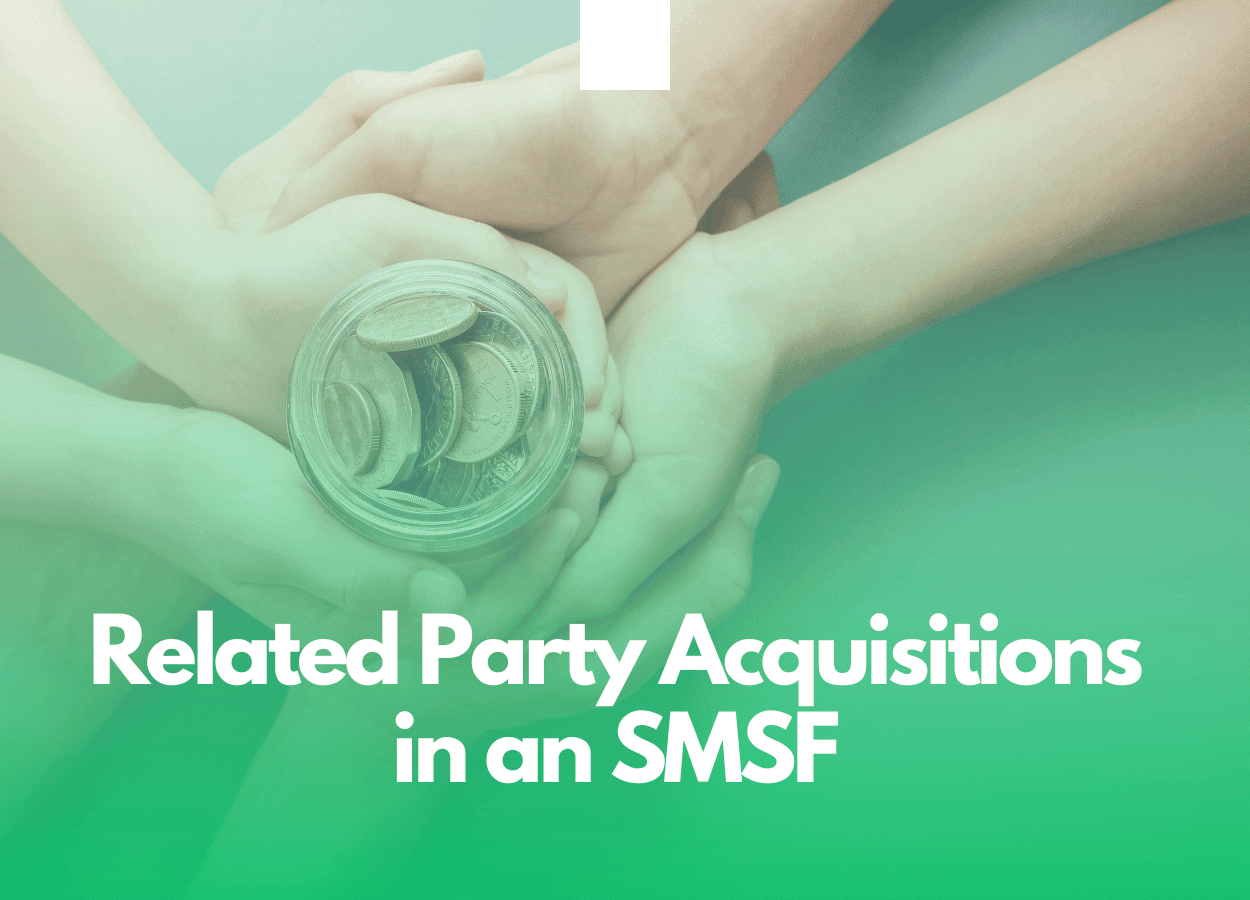By Daniel Shaw
As often is the case, members of self-managed superannuation funds (SMSFs) will have assets held outside of their SMSFs, either personally or in entities they control i.e., related parties. We often get asked whether the member’s SMSF can acquire these assets. This article will provide some further information on whether this is allowable.
We first need to consider, is the SMSF acquiring an asset from a related party. A related party is defined as:
- A relative of a member of the SMSF
- Other members of the SMSF
- A partner of the member in which they are in a partnership (individually tested)
- The spouse or child of the member
- A trustee of a trust controlled by the member
- A company that is sufficiently influenced by, or which in a majority voting interest is held by the member
If one or more of the above is satisfied, then we know that the SMSF is dealing with a related party transaction.
A review of the SMSF’s trust deed should be undertaken to ensure it allows for the acquisition of assets from related parties at market value.
The trustees of the SMSF will also need to review the investment strategy to ensure that the asset is one that is already listed and update the document if the asset needs to be inserted.
Superannuation legislation prohibits SMSFs acquiring assets from related parties, however there are a number of exceptions to this, which are listed below:
- Listed securities acquired at market value (includes shares and units on an officially quoted stock exchange)
- Where the SMSF has fewer than 6 members, business real property (commercial property) of the related party acquired at market value
- A life insurance policy issued by a life insurance company
- Related (controlled) non-geared unit trusts
- Units in widely held unit trusts
- Other in-house assets that would not result in the SMSF exceeding the 5% in-house asset ratio
- Assets acquired from a related party as a result of a relationship breakdown from a Family Law Act consent orders
If the asset satisfies one of the above, it can be acquired by the SMSF. It is important to note that the transaction must occur at market value. For listed securities, this should be easier to quantify, however where property or unlisted investments are involved, a third party valuation should be undertook.
The risk is that if the acquisition value is different, the difference can be treated as non-arm’s length expenditure (NALE), which has severe financial implications to the SMSF as income (including CGT) of the asset will be taxed at 45%.
The acquisition can be in either cash or via an in-specie transfer, which is counted towards a member’s concessional and or non-concessional contributions caps and the member’s eligibility to make contributions should be considered prior to the transaction being undertaken. If the acquisition is to be part cash and part in-specie transfer, this should be written into the contract to avoid any NALE issues.
It’s important to also consider and understand the timing of the acquisition of the asset, to ensure it occurs in intended income year, as age and total super balance (TSB) issues may arise. For listed securities, the asset is acquired when the off-market transfer forms are executed in full. For business real property, it is when the trustee of the SMSF completes all the necessary land transfer forms and takes passion of those forms and the relevant title deeds.
For further information or assistance please contact Daniel Shaw, Director and SMSF Association Specialist Adviser, who can assist with your enquiries.
The information provided does not constitute financial product advice. The information is of a general nature only and does not take into account your individual objectives, financial situation or needs. It should not be used, relied upon, or treated as a substitute for specific professional advice. We recommend that you obtain your own independent professional advice before making any decision in relation to your particular requirements or circumstances.


